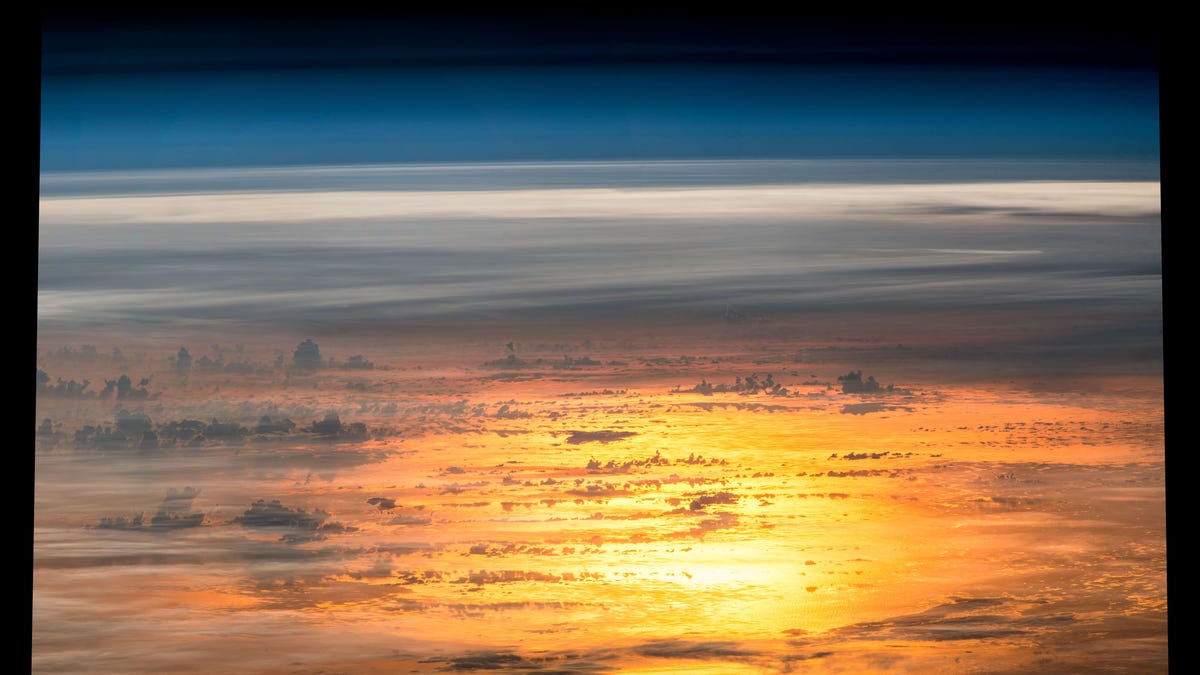NASA video reveals haunting beauty of sunsets on other planets
You can't visit Mars, Venus, Uranus or Titan in person, but you can enjoy their lovely sunsets.
This composite image shows a sunset view from the International Space Station in April 2016. NASA astronaut Jeff Williams snapped the series of photos that went into making this look at the sun reflecting on the ocean with an accompaniment of clouds.
We're all familiar with the glorious glow of sunset on Earth, but other worlds experience very different sunsets, as a series of NASA simulations show.
If you were to visit Uranus around sunset, you'd see a gorgeous palette of blues as the sun dipped away below the horizon, ultimately melding into turquoise. "This blue-green color comes from the interaction of sunlight with the planet's atmosphere," said NASA in release this week.
The simulations come from planetary scientist Geronimo Villanueva, who's working on modeling the atmosphere of Uranus in case NASA decides to send a probe to take a close look at the enigmatic ice giant planet. Villanueva tested out the computer modeling technology by generating sunsets.
Villanueva's work is presented as two videos, one giving an all-sky view as if looking through a camera lens and another showing what it would look like if you were on the surface and engulfed in the sunset.
The videos let us experience a regular Earth sunset, a hazy Earth sunset and sunsets for Venus, Mars, Uranus and Titan, a fascinating moon of Saturn. NASA is working on the Dragonfly mission to Titan, which involves an ambitious plan to fly a rotorcraft on the moon.
For another perspective on a Mars sunset, check out this view from NASA's InSight lander in 2019. That's the thing about sunsets on other worlds: They are both alien and familiar.


